Quiz Weeks 8 & 9 - Baroque Art
1/22
There's no tags or description
Looks like no tags are added yet.
Name | Mastery | Learn | Test | Matching | Spaced |
|---|
No study sessions yet.
23 Terms
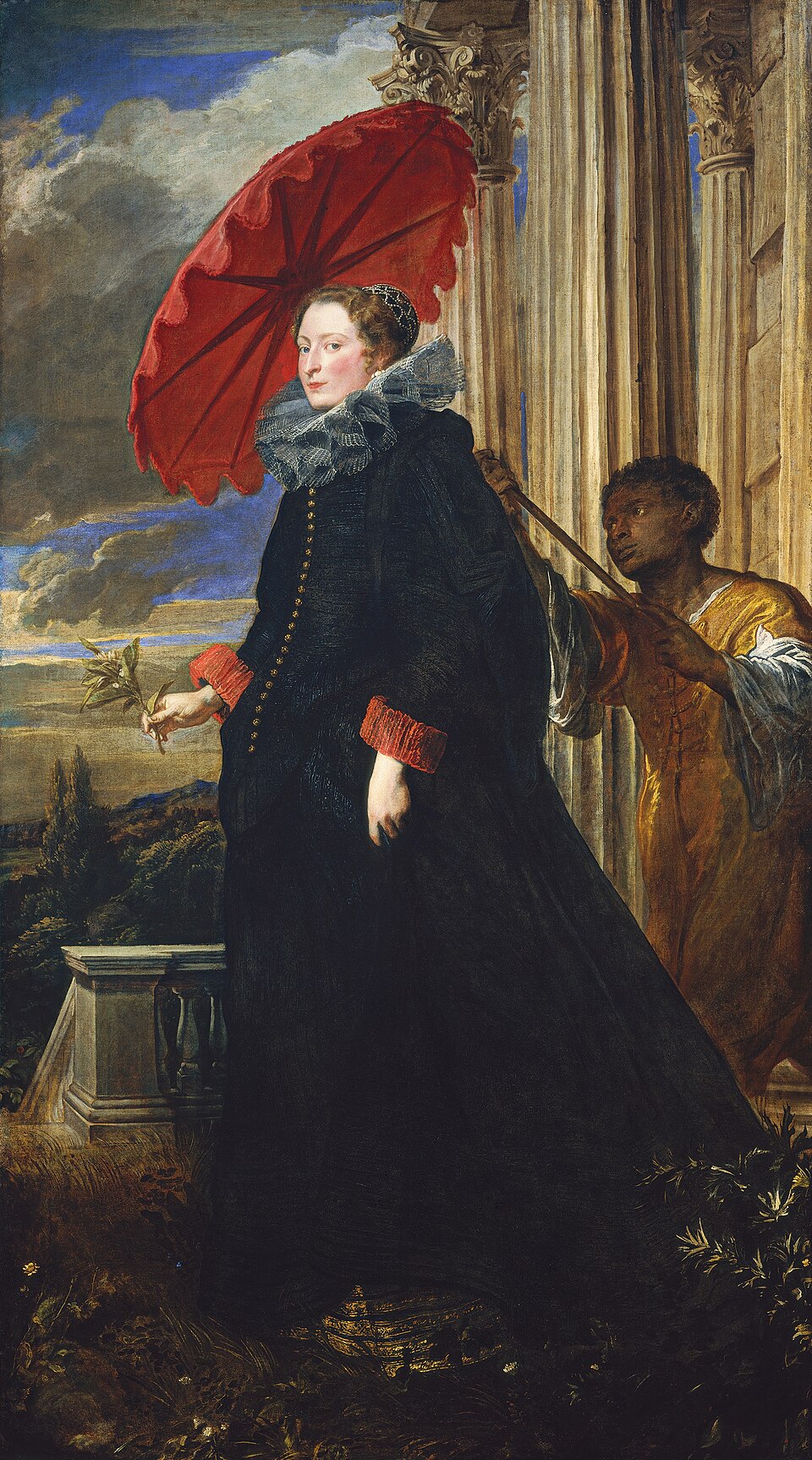
Anthony Van Dyck, Elena Grimaldi, 1623 (FLEMISH BAROQUE)
-”Grand Manner” portrait
-Painted during Van Dyck’s stay in Genoa
-Show of wealth, person behind her is likely a slave/servant
-During transatlantic slave trade times
-When compared to his famous peer and teacher Rubens, the subject of this painting has more implied motion
-Graceful
-Painted during the revolt of the Netherlands, Flanders was kept by Catholic Spain
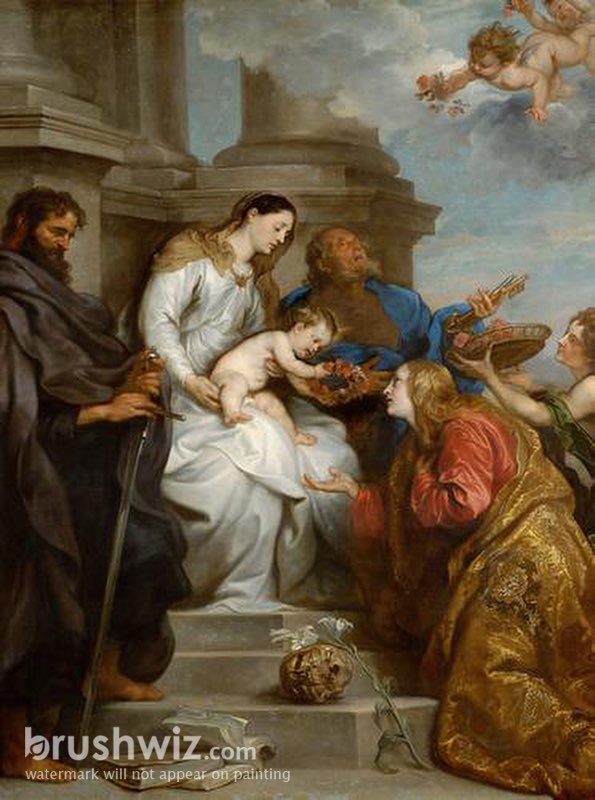
Anthony Van Dyck, Virgin & Child with St. Paul,
Peter, and Rosalie, 1629
-Confraternity "Christian Club", status symbol, commissioned him to make an altarpiece for their chapel in Antwerp
-Titian
-Veronese
-Sacra Conversazione
-Rosalie's bones cured the plague? Becomes invoked to cure the plague
-Painted during Netherlands revolt
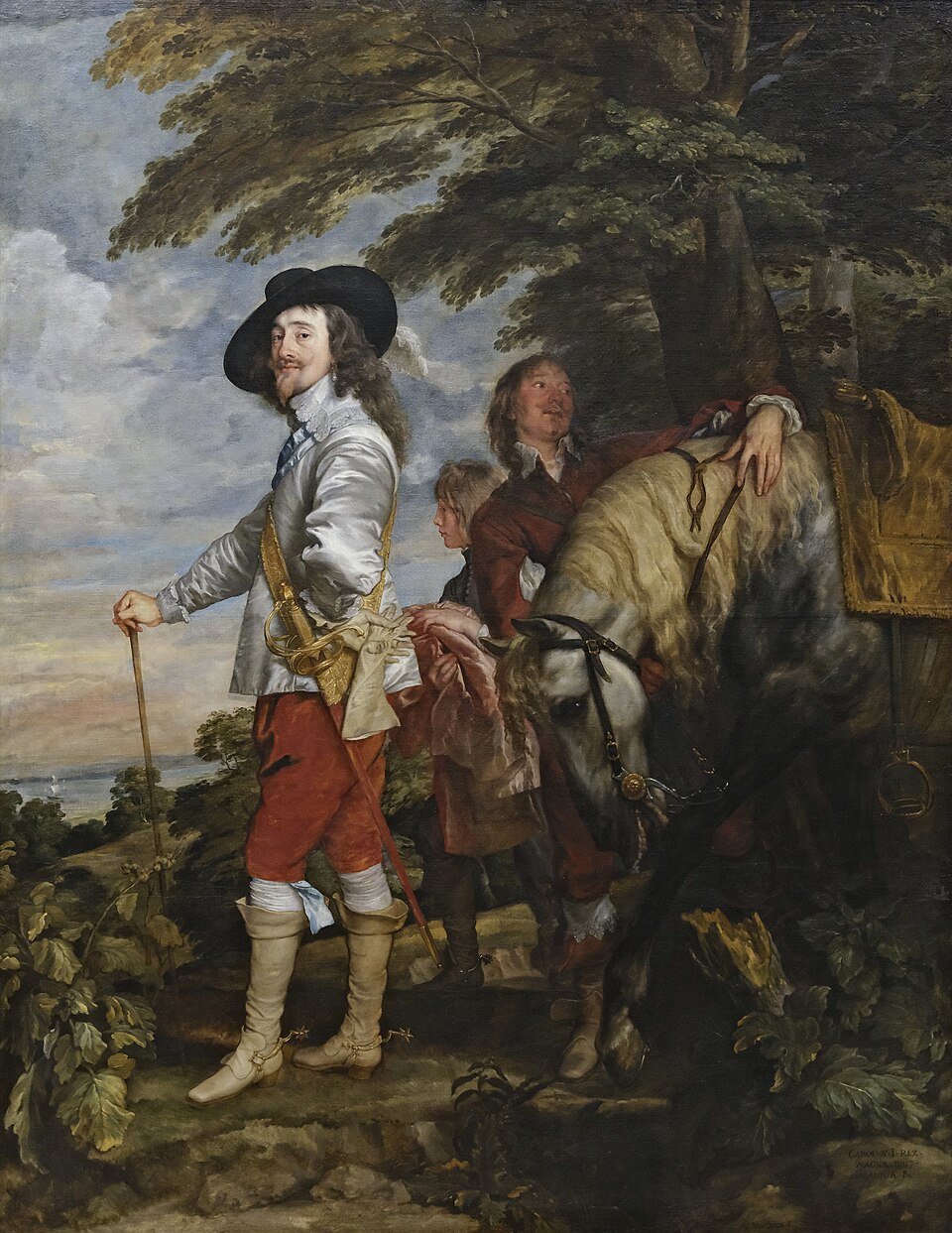
Anthony Van Dyck, Charles I at the Hunt, 1635
-Painted while Van Dyck was a painter for the King of England
-Purposely looks up at Charles to make him seem tall
-contributed to the Van Dyck trend of portraits at the time by keeping a sense of authority yet showing subjects at leisure.
-Charles I’s clothing and attitude in this painting sort of encapsulates his attitude towards power, and shows a conflict with parliament, leading to his beheading.
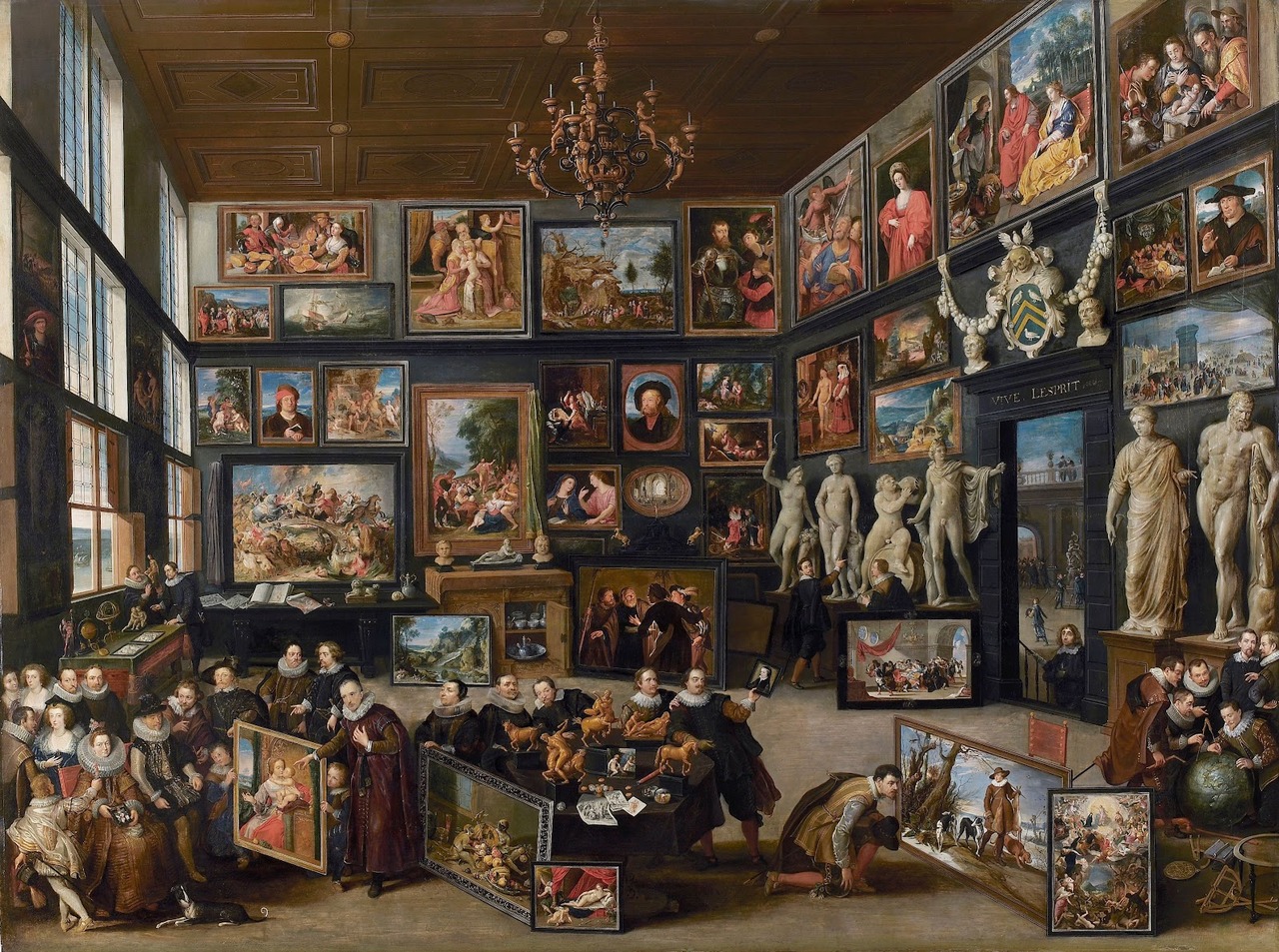
Willem van Haecht, The Art Gallery of Cornelis van
der Geest, 1628
-Van der Geest was a wealthy merchant from Antwerp.
-Not exactly a representation of real life and his actual gallery & guests, but a gallery painting made to showcase the art he has collected.
-drawing on table is a reference to an ancient roman painter and is a possible allegory for art
-vive lespirit “long live van der geest!”
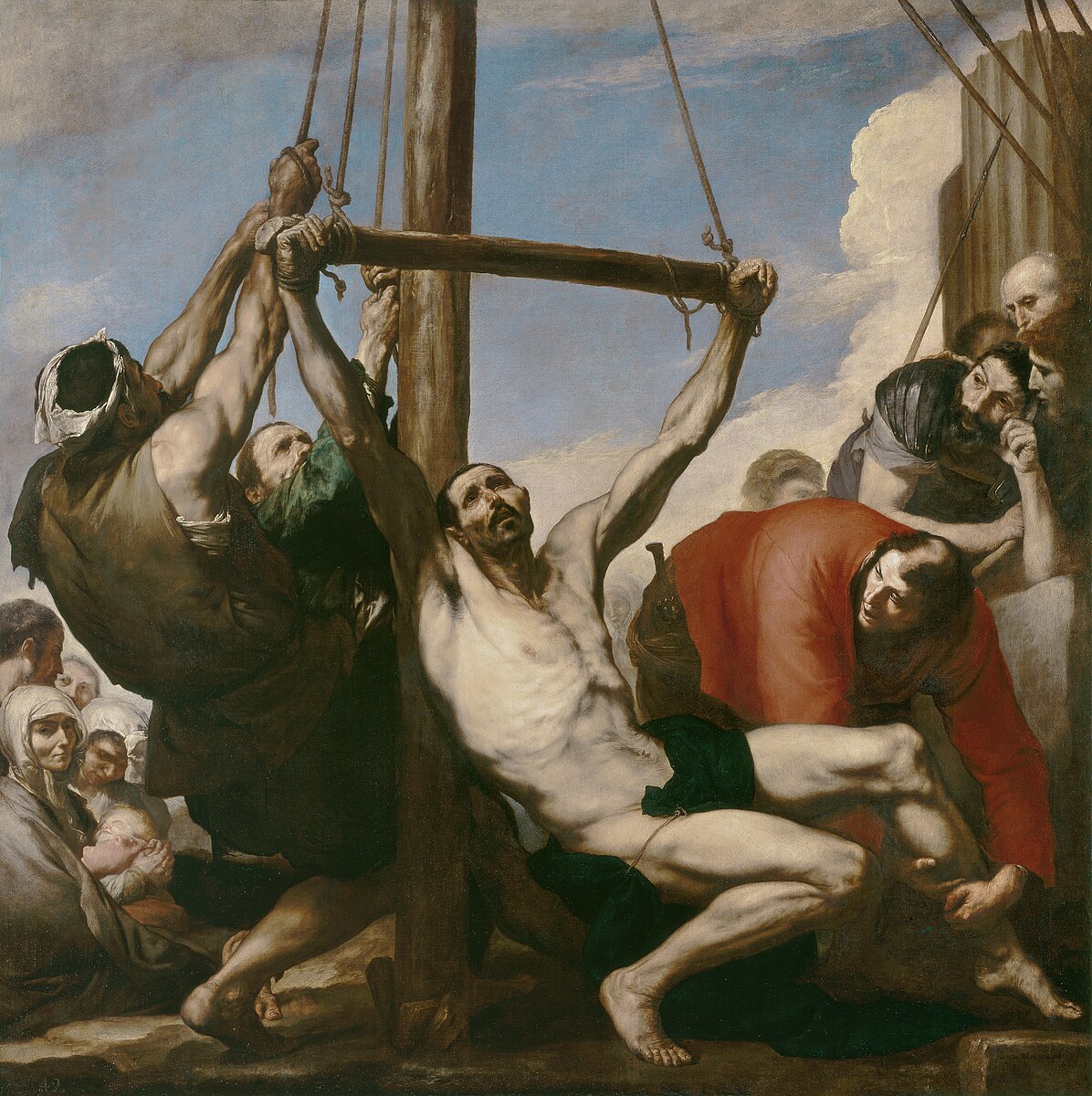
Jusepe de Ribera, Martyrdom of St. Philip, 1639
-depicts the moments before the crucifixion of the apostle, commissioned by the Duke of Medina de las Torres as a gift for King Philip IV
-Implied movement with the lifting of legs. elegant yet visceral, depicting such an intense act
-chiarascuro
-brutal themes in spanish baroque art
-commissioned by archduke, Viceroy of Naples, for King Philip IV of Spain
-Spain is poorest country at the time so only church and kings and wealthy people can commission paintings really
-St. Philip known for preaching the gospel in eastern Europe, martyred in turkey
-Definitely similar to Caravaggio's paintings
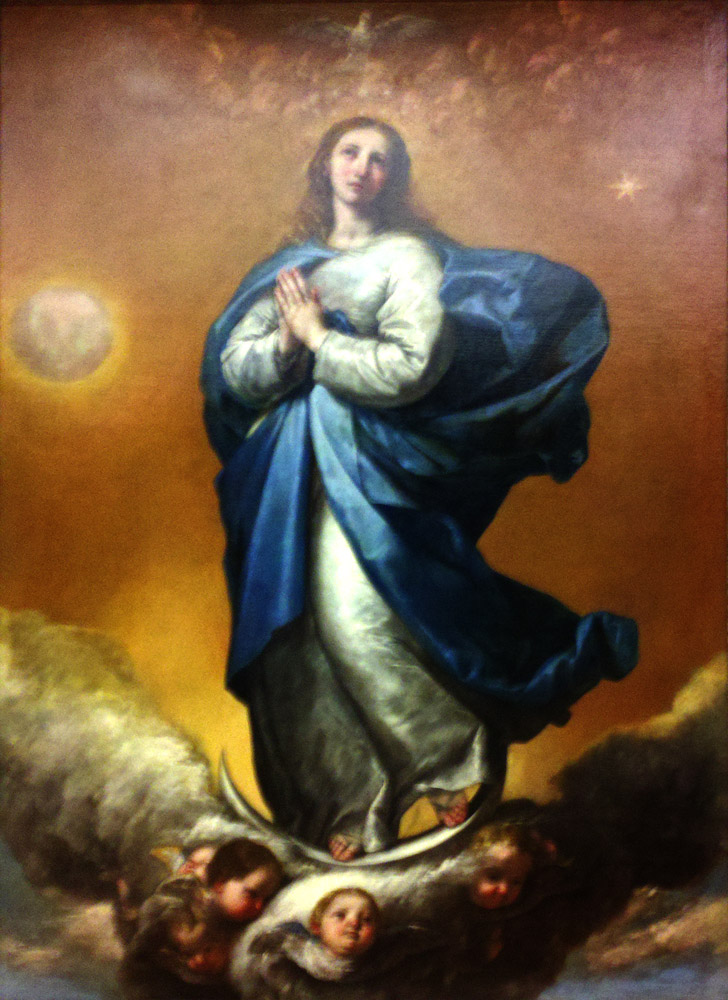
Jusepe de Ribera, Virgin of the Immaculate Conception, 1637
-favored over the more subtle paintings because of its dramatic baroque qualities and counter-reformation subject matter
-Ribera was very influenced by Caravaggio, having spent time in Italy and having seen Caravaggio’s work, but this painting turned away from that style
-influenced by guido reni's immaculate conception which was commissioned by a Spanish king
-commissioned as a large altarpiece
-big one for altar, little one for nun
-Catholicism
-Netherlands revolt
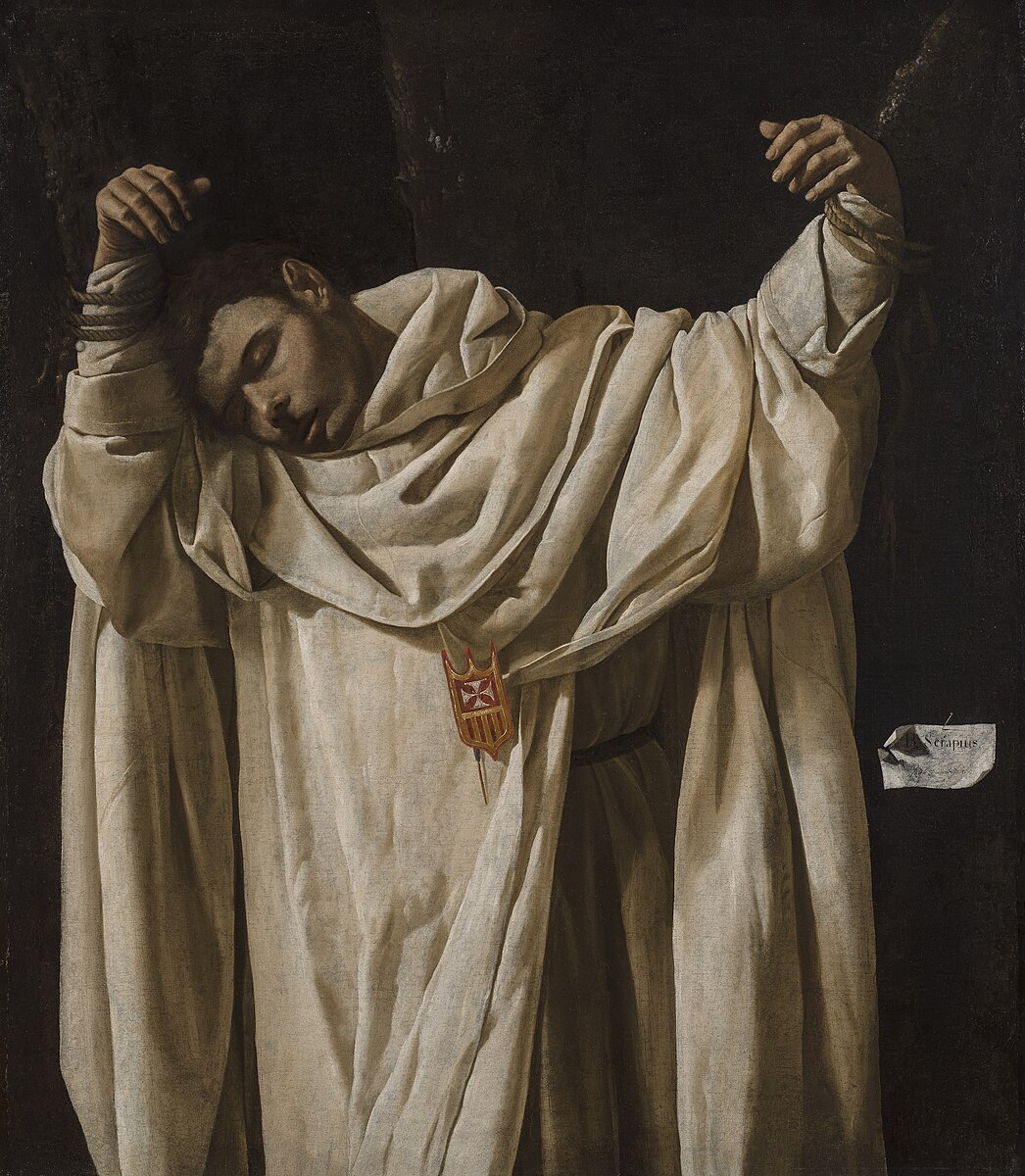
Francisco de Zurbarán, St. Serapion, 1628
-St. Serapion of Algiers
-TENEBRISM
-unique for nonviolent portrayal of martyrdom
-Third Crusade, 1196
-Badge on tunic is a symbol of the order of mercy
-Christ-like
-White robe characterizes st. serapion with the badge
-Influenced by Caravaggio AND Ribera
-Drama is communicated through the dark shadows and the dramatic lighting on the gown with all the folds and the bright highlights
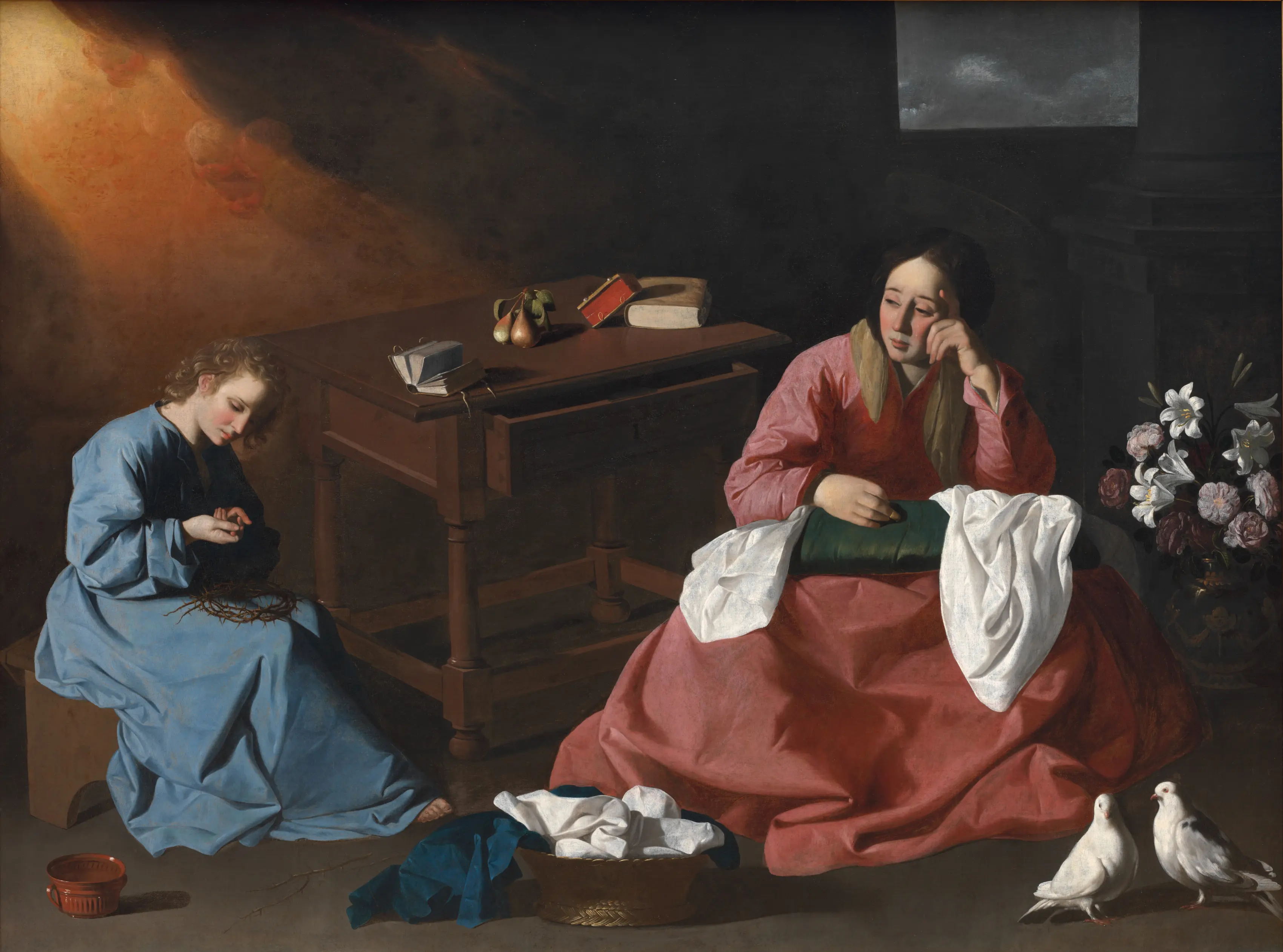
Francisco de Zurbarán, Virgin & Christ in the Holy House of Nazareth, c. 1640
-Humble presentation
-Mary is sewing and embroidering
-Apocryphal gospels
-Christ is poked by the crown of thorns, the virgin is realizing his fate and crying
-tiny thin halo above the virgin
-heavenly light illuminating the area christ sits in, the angels are barely visible in this light
-Sewing basket is a domestic symbol
-Mary is wearing a thimble to protect her finger and christ has poked himself
-Doves are what is offered in sacrifice when he was taken to the temple
-Pears on table are a momento mori
-Interesting representation of jesus
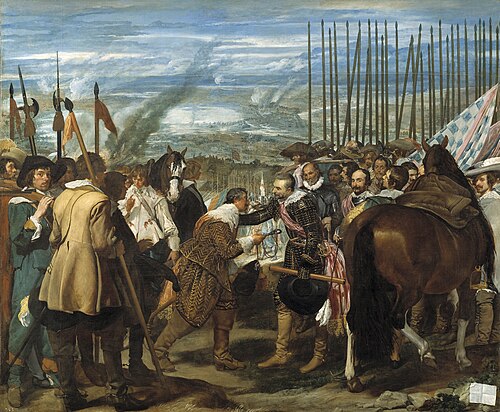
Diego Velázquez, Surrender at
Breda, 1635
-depicts the magnanimous Spanish victory over the Dutch in 1624
-spanish general recieving keys to the city from dutch commander, instead of shame
-symbol of mutual respect
-during the eighty years war/netherland revolt
-velazquez is a self portrait on the right side of the scene
-Painted between 1634-1635 for the Hall of Realms in King Philip IV's new palace, the painting was intended to celebrate Spanish military might
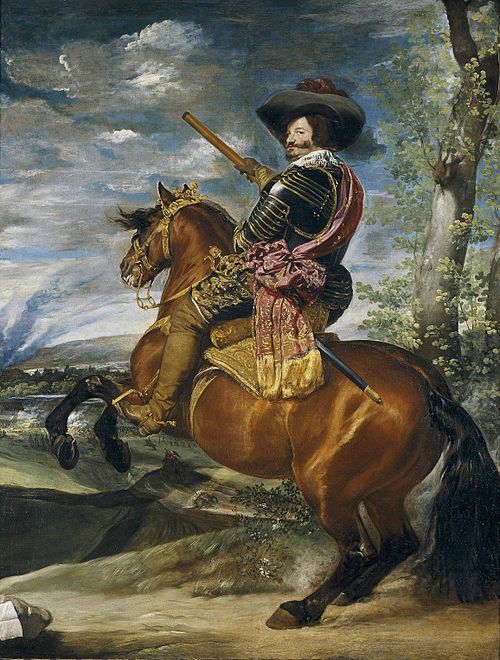
Diego Velázquez, Equestrian Portrait of Count-
Duke Olivares, 1638
-political portrait of Gaspar de Guzmán, the prime minister of Spain under King Philip IV
-This imagery was meant to showcase his power and command, emphasizing both his political role and his skill as a horseman, a metaphor for strong leadership
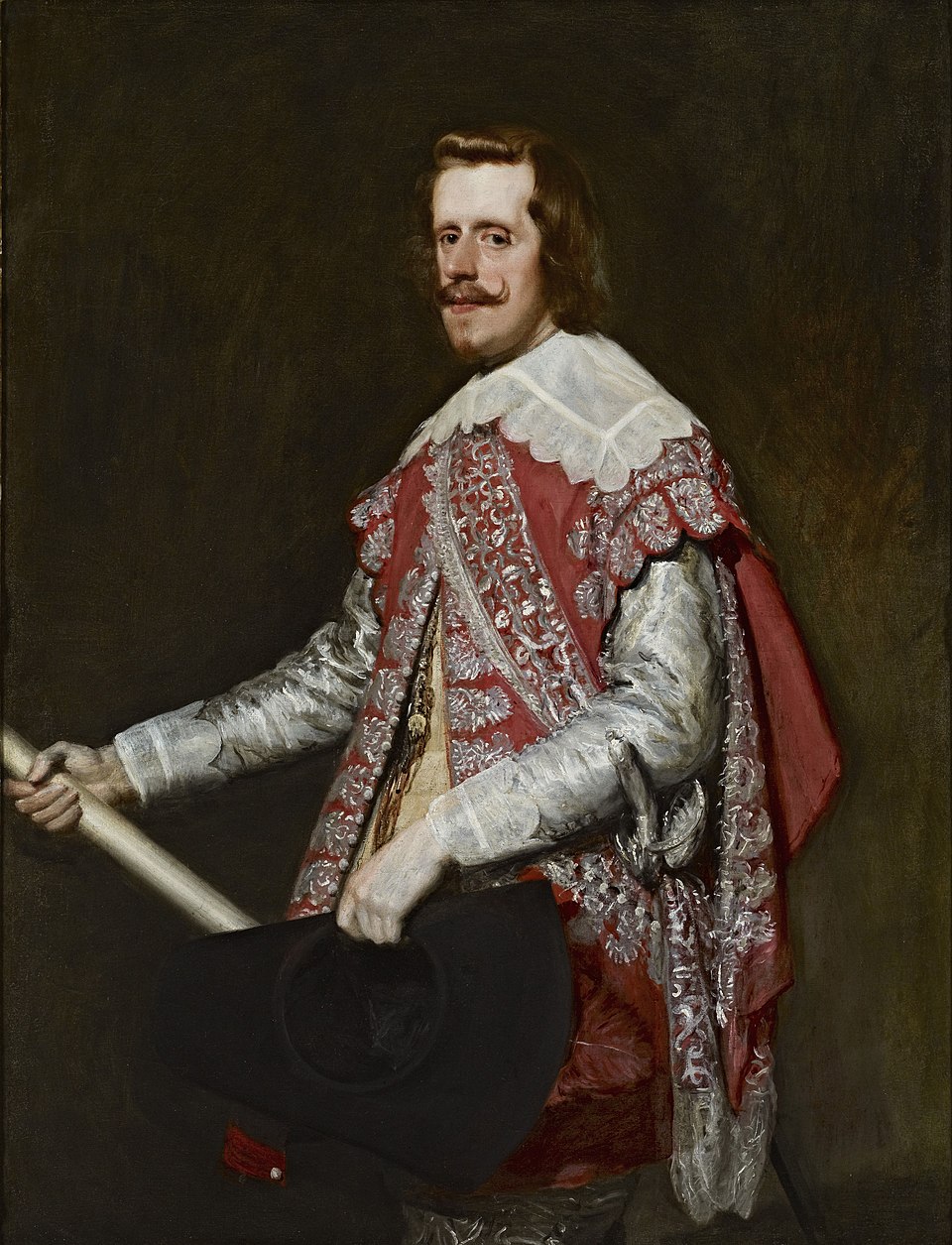
Diego Velázquez, Philip IV of Spain in Fraga,
1644
-created in a makeshift studio
-king in military attire
-immortalize the king as a victorious military leader
-tenebrism
-associated Philip with his deceased brother
-propaganda
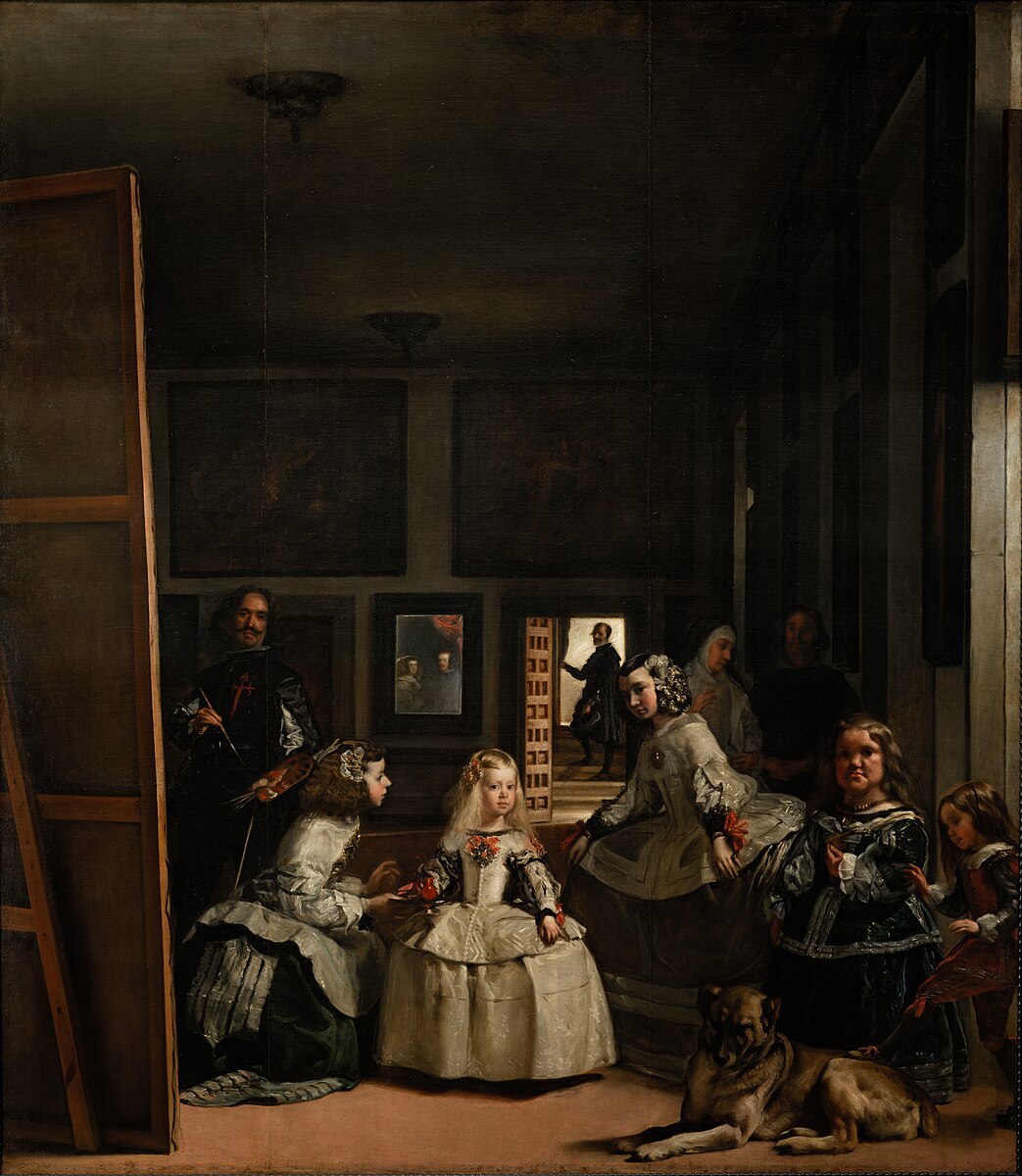
Diego Velázquez, Las Meninas, 1656
-shows the Spanish royal family and their entourage
-elevates the status of art and artists and shows the potential of painting
-King and Queen are reflected in background mirror
-places himself in the painting which emphasizes the importance of the artist
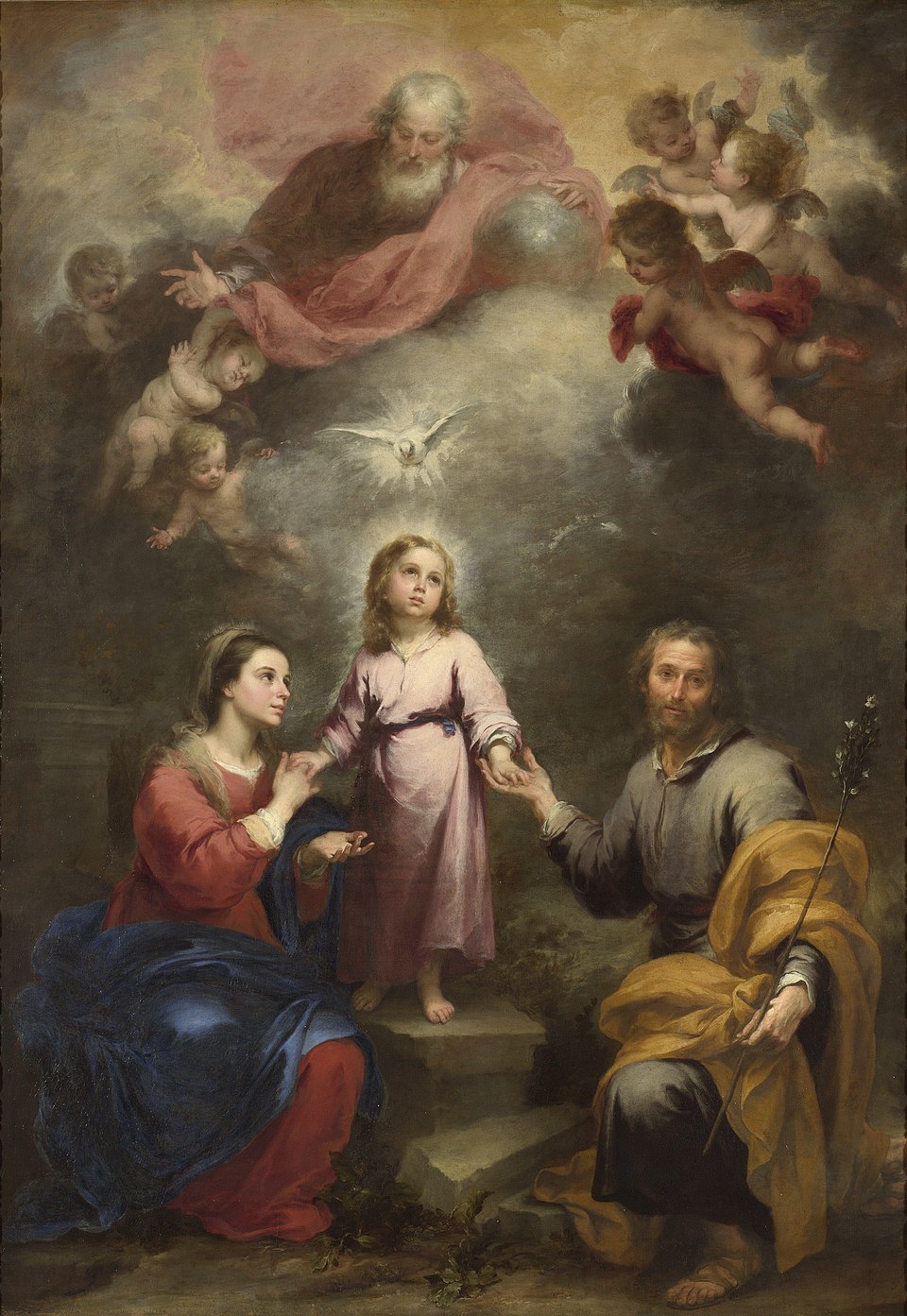
Bartolomé Esteban Murillo, The Two Trinities, c. 1680
-two "Trinities": a celestial one with God the Father, the Holy Spirit (as a dove), and Christ; and an earthly one with the Virgin Mary, Saint Joseph, and Jesus as a child
-inspired by jesuit engravings
-christ’s dual human and divine nature
-Despite the grim reality of the time, Murillo's art offered a sense of reassurance and heroism through its emotional and spiritual themes
-made during plague and war
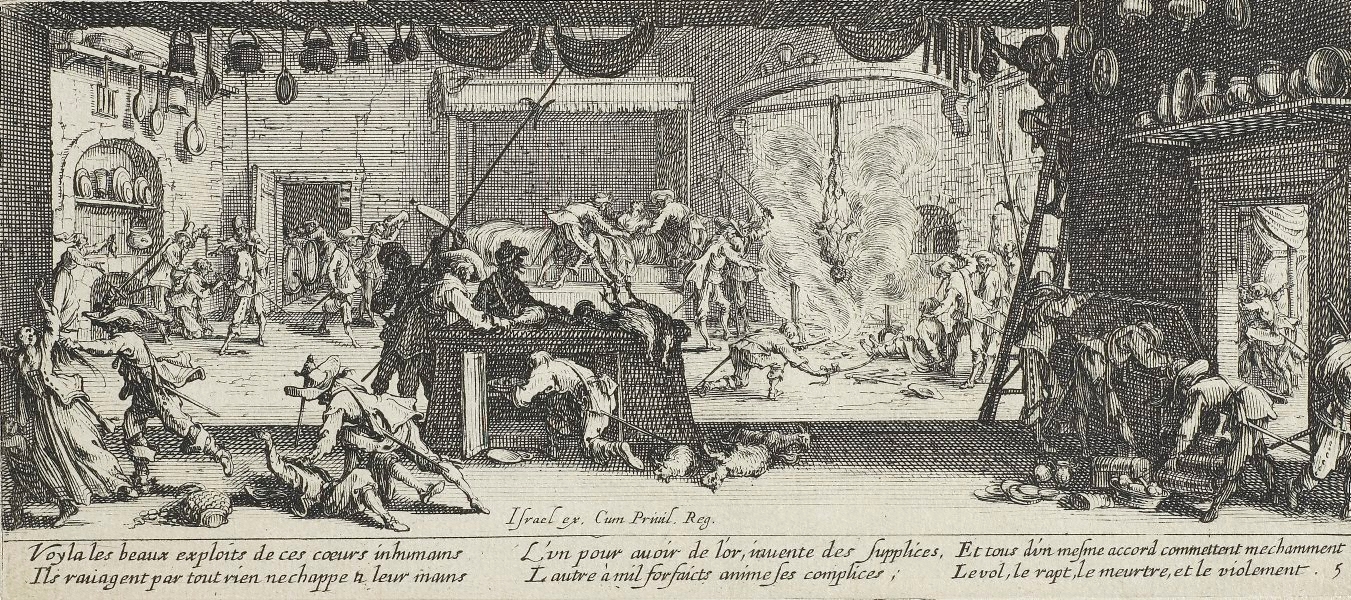
Jacques Callot, Pillage of a Farmhouse, The Great Miseries of War, 1633, etching
-theatrical presentation of real events
-interior of a domestic house
-violent
-people are begging for mercy and soldiers are either taking food or destroying wine or beer
-burning a peasant, showing how when the soldiers are in misery, so are the citizens
-soldiers didn’t get paid so some pillaged while others rotted in the streets
-etching technique
-wars in lorraine
-easily reproduced so possibly distributed to a large audience
-baroque for this one: theatrics with especially light and shadow
-THIRTY YEARS WAR
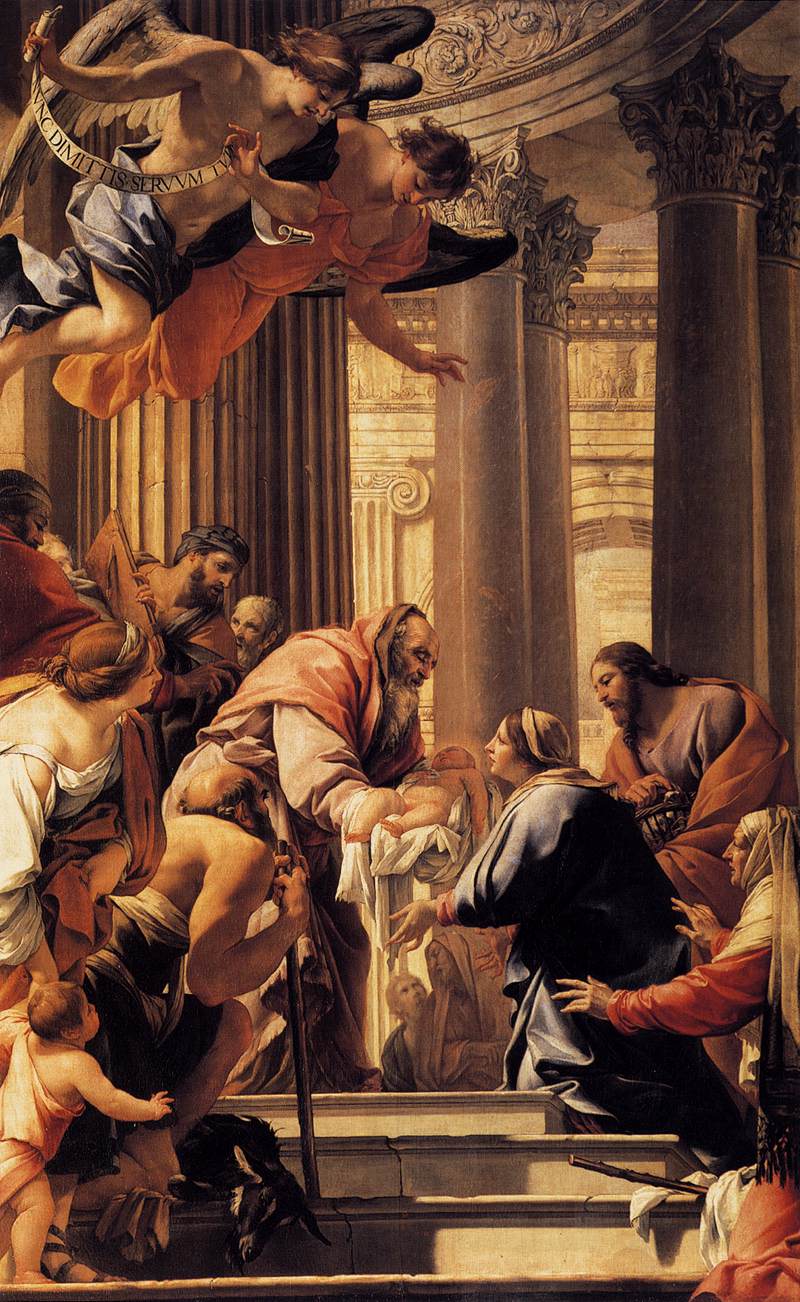
Simon Vouet, Presentation of Christ in the Temple, 1641
-Commissioned as an altarpiece for cardinal Richelieu
-Vouet is painter to the king
-christ’s infancy, tradition of taking baby into temple for priest’s blessing
-jesuit’s professed house
-jesus halo
-modeled after Veronese and Agostino Carracci
-classical architecture, modeled after what Vouet has seen in Rome
-spent 14 years in italy to establish french tradition and bring art to france
-influenced by caravaggio
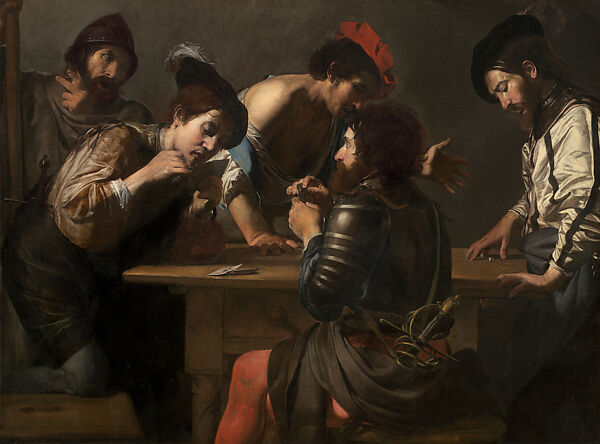
Valentin de Boulogne, “The Cheats” Soldiers Playing Cards and
Dice, c. 1618
-Soldier represents the ongoing wars in the area
-bright lights and dark shadows, caravaggio influence with the intertwining and intersecting of hands and gestures
-soldiers vs “fools” with feathers in hats
-Baroque realism
-soldiers in back is cheating
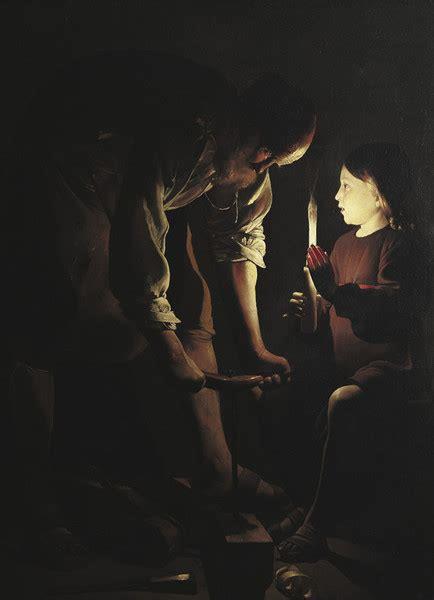
Georges de la Tour, St. Joseph the Carpenter, c. 1635
-humble presentation
-known for dark tenebristic scenes
-teaching jesus to be a carpenter
-diagonal interaction
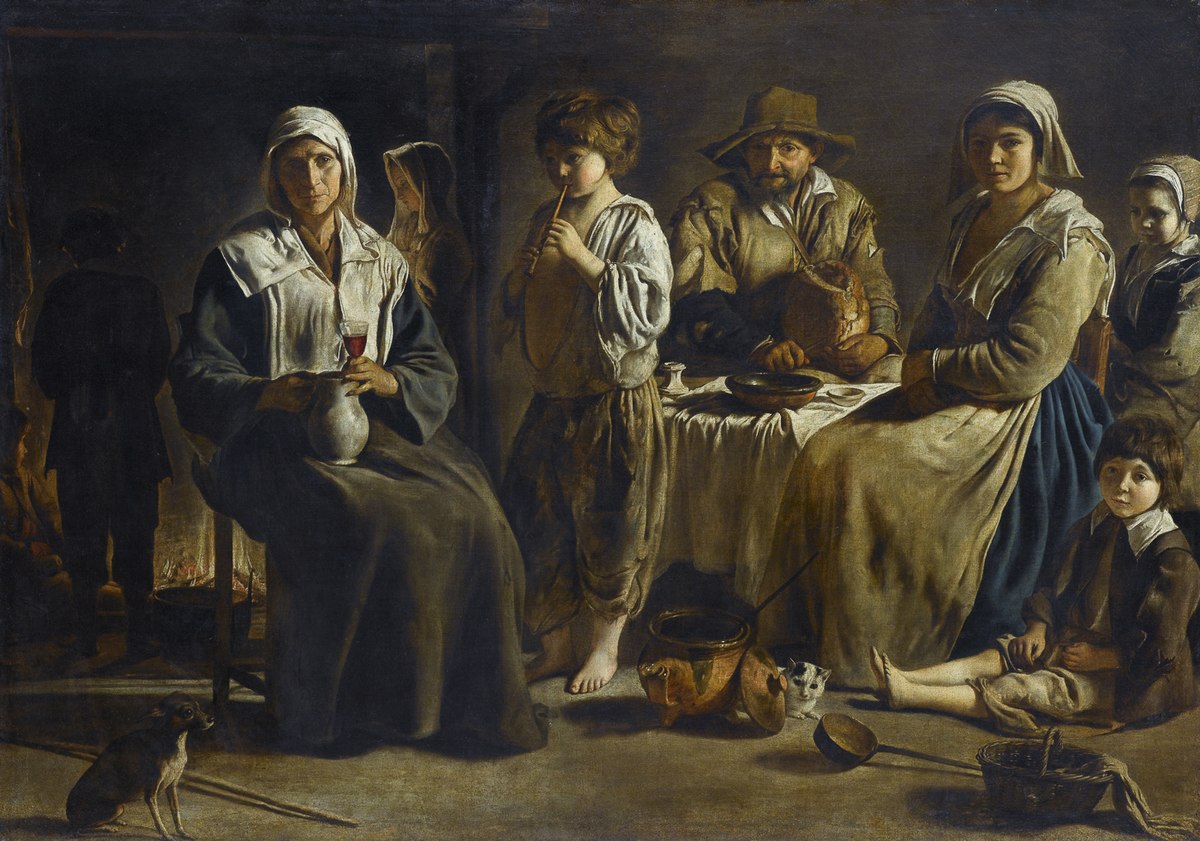
Louis Le Nain, Peasant Family, c. 1640
-rural
-common theme for Le Nain
-influenced by Dutch genre paintings
-Le Nain’s paintings showed dignity of peasants
-many ppl in the families
-two competing light sources
-rough fabric = poverty
-dog and cat and farm workers
-simple and poor but together and loving
-wine and bread = religious symbolism
Confraternity
King Philip IV
Etching
Duchy of Lorraine
-Part of the holy roman empire that got annexed by france
Thirty Years’ War
-Conflict within the Holy Roman Empire